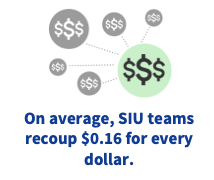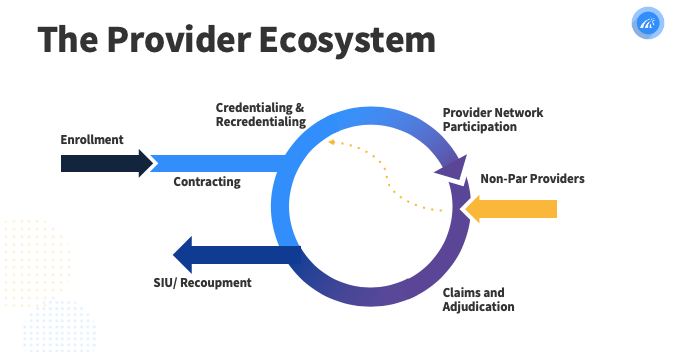Non-par providers are a challenging population for health plans for many reasons, all of which contribute to claims leakage. They represent outsized risk for operational waste, and require significant effort to maintain data hygiene. But ongoing monitoring can dramatically reduce this risk and improve the financial performance of government programs. In this brief post, we explore the topic of claims leakage in non-par provider networks and how smarter monitoring can protect revenue.
Claims Leakage is defined as lost dollars through claims management inefficiencies that ultimately result from failures in existing processes (manual and automated).
The Provider Ecosystem
Non-par providers can enter your plan’s ecosystem through a variety of doors, but every route bypasses the full discovery of enrollment, contracting, and credentialing. This drives data inconsistency and allows non-pars eligibility issues to fly under the radar, increasing claims leakage in your non-par networks.
Quantifying Risk Among Non-Pars
But what is the risk among your non-par providers? While utilization per provider is significantly lower, this population can be 10x your participating networks (depending on how your plan defines non-pars). That volume itself carries risk.

Our analyses show roughly twice the risk of an active OIG or Medicaid exclusion within non-par populations, even after controlling for volume.
And that’s with our smarter monitoring and data enrichment automation. Our technology finds eligibility issues other solutions can’t by filling in the gaps of missing data. If you’re relying on a vendor or process that isn’t ProviderTrust, you could have significantly more exclusions and other eligibility issues across your populations than you realize.
That means claims are being paid from your plan today to ineligible providers. Integrating our ongoing monitoring solution into your existing processes dramatically reduces this claims leakage. The results are immediate and continuous.
Steps to Preventing Claims Leakage in Non-Par Networks
- Define ownership among constituents across the business
- Establish best practices (scope, criteria, frequency) for your organization. Build your monitoring matrix.
- Eliminate manual verification and automate your workflows
- Integrate into your existing workflows (API / SFTP)
Want to learn more about how Smarter Monitoring can help your plan reduce claims leakage?
[button text=”Let’s Chat” link=”get-started” class=”button-blue-text” arrow=”true”]










